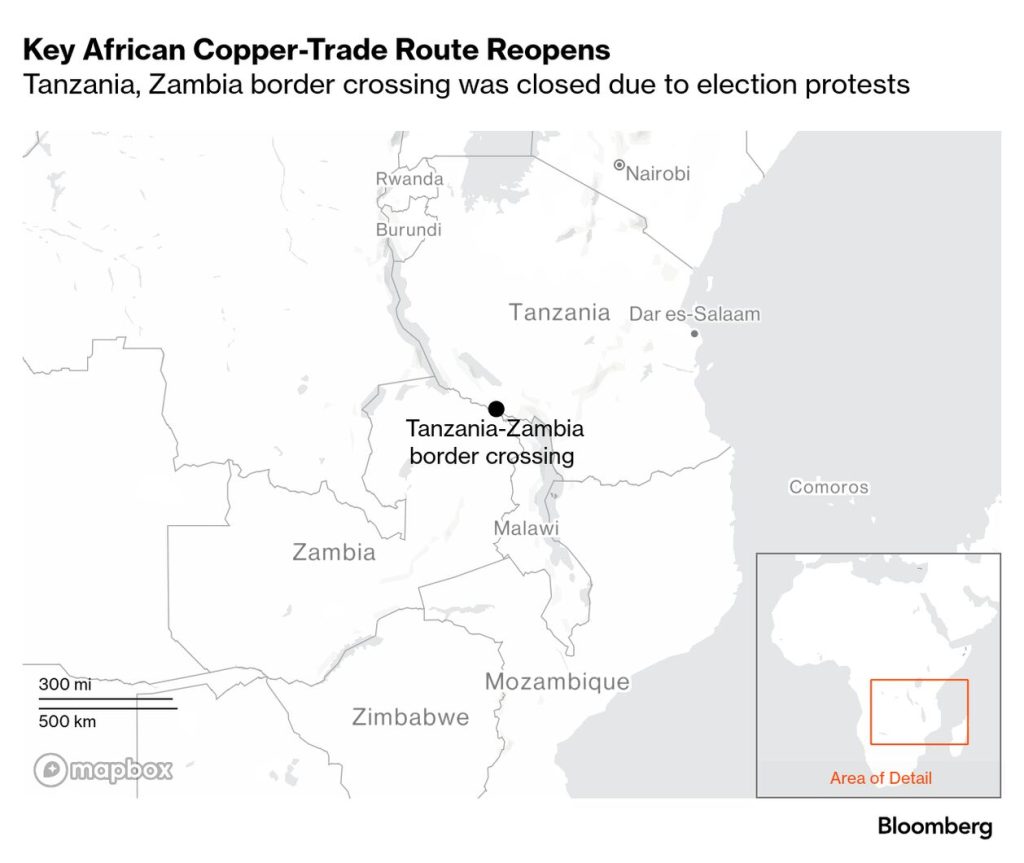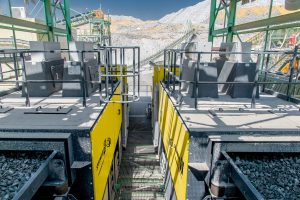By Africa Mining & Engineering Review Editorial Team
A Strategic Lifeline for Africa’s Mining Supply Chain
The reopening of the Zambia–Tanzania trade corridor marks a major milestone for Africa’s logistics and infrastructure development. Following temporary disruptions caused by post-election tensions, the reopening of the Nakonde–Tunduma border has restored a vital artery for copper and cobalt exports — minerals that are the backbone of Zambia’s economy and critical to Africa’s role in global energy and mining supply chains.
This corridor, connecting Zambia’s Copperbelt to Dar es Salaam Port in Tanzania, handles thousands of tonnes of mineral exports each week, particularly to markets in Asia. For mining, logistics, and engineering stakeholders, this is not just a return to normal operations — it’s a lesson in how strategic infrastructure investments can transform Africa’s industrial and trade future.
Infrastructure and Engineering Perspective
From an engineering and logistics standpoint, the reopening underlines the importance of resilient, well-maintained transport systems. Efficient roads, railways, and border facilities are the backbone of Africa’s mining and manufacturing value chains.
Key implications for the sector include:
- Supply Chain Reliability: Restoring the corridor helps stabilize copper and cobalt export schedules, reducing bottlenecks and ensuring consistent delivery to global markets.
- Infrastructure Modernisation: With around 250 trucks crossing each way daily, there’s an urgent need for road durability, digital customs systems, and expanded border facilities.
- Engineering Opportunities: This presents a chance for civil and industrial engineers to push for road rehabilitation projects, logistics park developments, and smart weighbridge technologies.
- Energy and ICT Integration: Corridor upgrades create opportunities for renewable energy installations, fibre-optic connectivity, and intelligent traffic management systems to boost efficiency and sustainability.
Lessons for Other African Economies
The success of the Zambia–Tanzania corridor offers valuable lessons for other African nations seeking to strengthen intra-African trade and access global markets:
- Invest in Regional Corridors: Countries like Mozambique, Botswana, Namibia, and the DRC can replicate this success by expanding road and rail links from mining regions to seaports.
- Foster Public–Private Partnerships (PPPs): Collaborative efforts between governments, engineering firms, and logistics companies accelerate project timelines and enhance infrastructure quality.
- Streamline Border Management: Digital customs systems and harmonized procedures can significantly cut clearance times and operational delays.
- Develop Industrial Hubs: Creating logistics parks and processing zones along key transport routes drives employment and local economic diversification.
- Prioritize Sustainability: Embedding environmental and community considerations in corridor design ensures longevity and regional support.
Notable African Infrastructure and Trade Corridors
1. The Lobito Corridor
Stretching from the Atlantic coast port of Lobito in Angola through to the mineral-rich regions of the Democratic Republic of Congo (DRC) and Zambia, the Lobito Corridor is one of Africa’s most transformative projects.
- The corridor includes a 1,289 km railway from Lobito to the Luau border and a 28 km branch line, serving as the main export route for copper and cobalt.
- Backed by over US $200 million in financing from the Development Bank of Southern Africa (DBSA), it aims to provide a faster, more efficient route to global markets.
- The project underscores the importance of engineering resilience, as it requires advanced rail design, bridgeworks, and maintenance infrastructure in challenging terrain.
Key Takeaways:
- Emphasizes multi-cargo capabilities beyond mining.
- Highlights the importance of cross-border governance and interoperability in railway engineering.
- Demonstrates the role of logistics integrators and asset management systems in maintaining corridor performance.
2. The North–South Corridor (Southern Africa)
Covering a vast section of Southern Africa, this corridor extends from the Port of Durban (South Africa) through Zimbabwe, Zambia, and into the DRC. It is one of the most economically significant trade routes in the region.
- The Southern African Development Community (SADC) endorsed it as a “smart economic corridor,” integrating transport, power, and ICT infrastructure.
- It currently moves over 60% of SADC’s trade and supports more than half the region’s population.
- It overlays key mineral zones, creating a multi-sector growth platform for mining, manufacturing, and agriculture.
Engineering and Logistics Opportunities:
- Design and construction of multi-modal networks integrating road, rail, and inland ports.
- Development of industrial and energy zones alongside transport routes to attract manufacturing investments.
- Incorporation of digital and smart technologies — from predictive maintenance systems to real-time logistics tracking.
Building a Network of Trade Arteries Across Africa
Africa’s economic development hinges on its ability to move goods efficiently, sustainably, and securely. The reopening of the Zambia–Tanzania corridor — along with major initiatives like the Lobito and North–South Corridors — demonstrates what’s possible when infrastructure investment aligns with industrial strategy.
For engineers, planners, and policymakers, the next phase is clear:
- Expand cross-border connectivity by linking mines, energy plants, and ports through shared corridors.
- Promote regional standardization of infrastructure designs and digital systems.
- Integrate value-add industries (refineries, processing plants, and logistics hubs) along transport routes to retain economic value within Africa.
These efforts directly support the goals of the African Continental Free Trade Area (AfCFTA), which envisions an integrated, borderless Africa powered by trade, innovation, and industrial collaboration.







